Not all knives are created equal and in fact not all Japanese knives are created equal. At the central core of any good Japanese knife is hard steel that is both tough and able to be sharpened to a keen edge.
This doesn’t happen by mistake. Only a highly skilled blacksmith can coax a balance of hardness, toughness and longevity from quality steel. It takes years of training and many decades of practice to create something that simply cannot be replicated in a mass produced factory. True hammer forged knives are a combination of science and art.
Correct heat treatment of the steel is the single process that can be detrimental to the overall quality of the knife, regardless of the type of steel used or the region that it’s made. Heat treatment is made up of two stages: quenching and annealing. Many people call annealing tempering.
After the romantic part of creating a Japanese knife is now complete (see part one) the blacksmith has one last task. While I could talk about the science of martinsite transformation and crystallites, let’s go with the discovery channel version.
Quenching
The quenching process creates hardness. In fact it makes the knife much harder than the finished product but way too brittle. Firstly the knives are heated in a furnace and then plunged into a cold liquid. This process is called quenching. Japanese knives can be water quenched, oil quenched or quenched in a supercooled liquid.
I talk to Tanaka-san from Sakai (not to be confused with the millions of other Tanakas in Japan). As one of Sakai’s most respected blacksmiths, Tanaka-san’s insights are fascinating. “I only use pine charcoal for the quenching process,” he says, “some use coal but there are too many impurities. It makes the blade weak”. He also shows me the book from Hitachi metals showing the correct temperature to process the aoniko knives he is making today.
Firstly the knives are coated in a thin layer of clay slurry. They are dipped several times until a correct thickness is achieved. One by one the blades are heated in the furnace until the desired temperature is reached. The blacksmith knows the temperature instinctively by the colour of the steel. Today we are after a ‘deep bright red hue’.
When we get to the “deep bright red hue”, the knife is plunged into a deep bath of water. “Why do you quench in water?” I ask. “Because it would be waste of Shochu!”, quipped Tanaka-san. At least he has his priorities right.
Interesting fact – Quenching takes place after dark so the blacksmith can judge the colour of the steel.
Annealing or tempering
The second stage in heat treatment is annealing or tempering. In this process the steel decreases in hardness and becomes much tougher and less brittle.
For Honyaki knives, a layer of clay is applied to the top of the blade to ‘soften’ the spine and creates a beautiful Hamon pattern (which appears like a soft wave).
The preferred method of tempering prescribed by Tanaka-san is in an air circulated oven at a specified temperature for about an hour.
After this process the knife blanks are ready to send over to the Togishi – Master Sharpener.

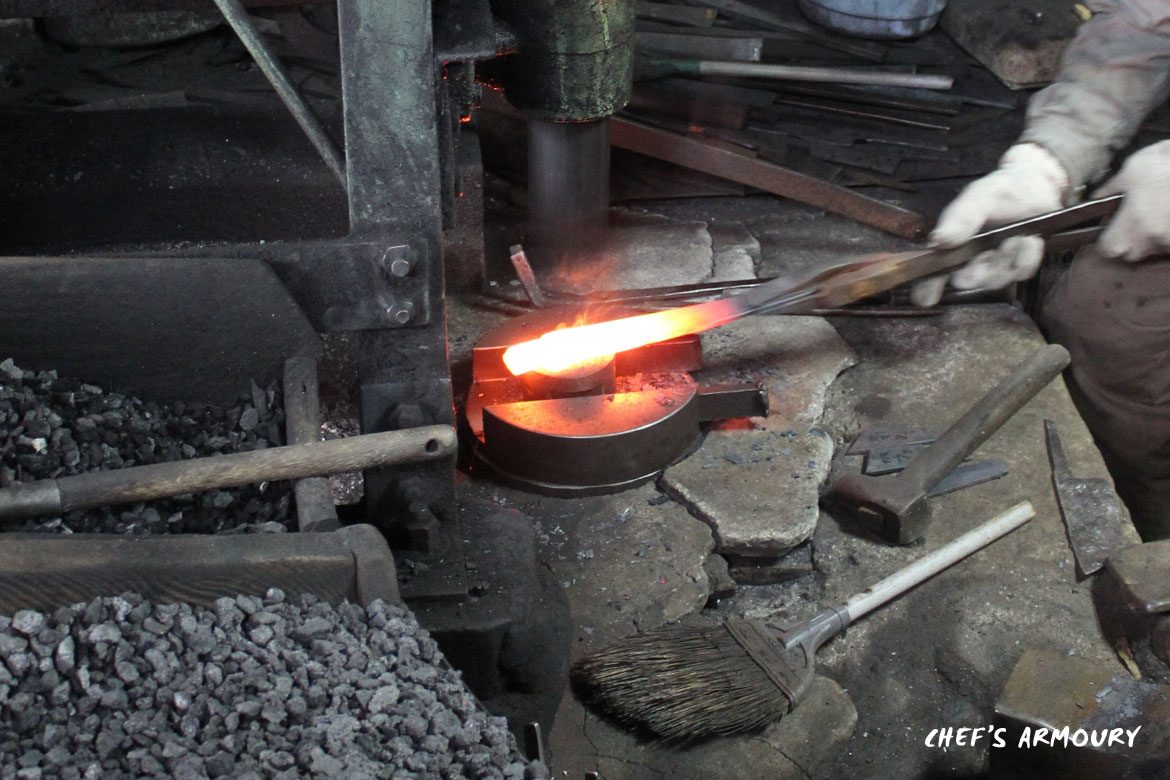
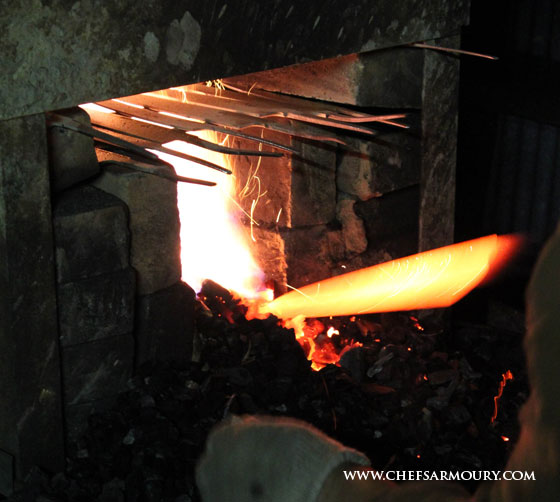
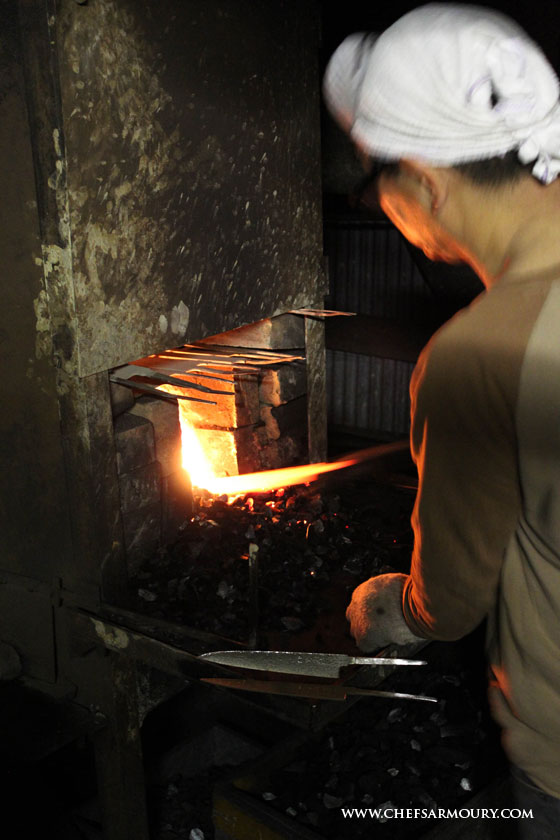
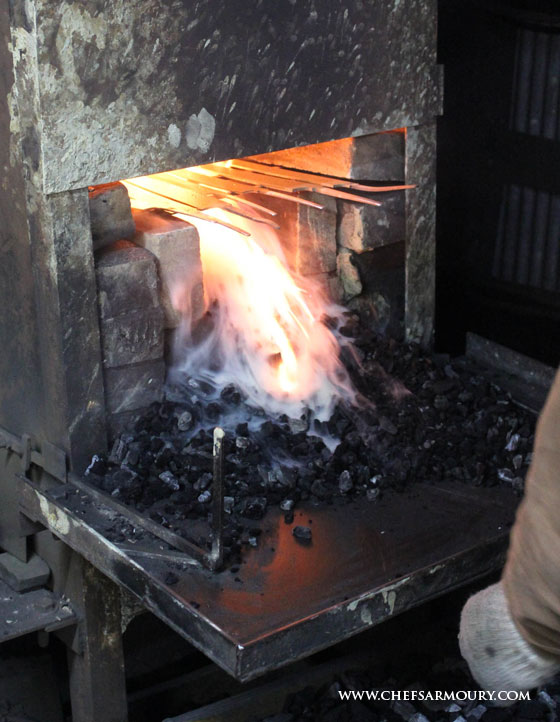

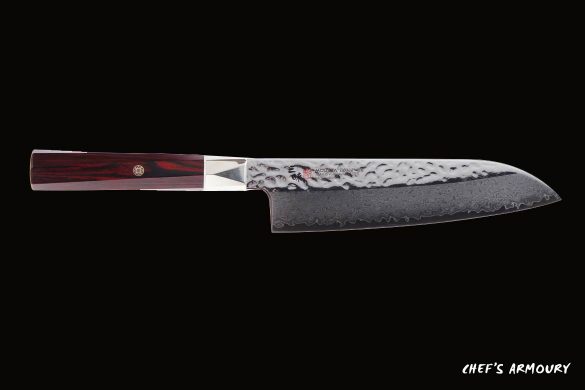
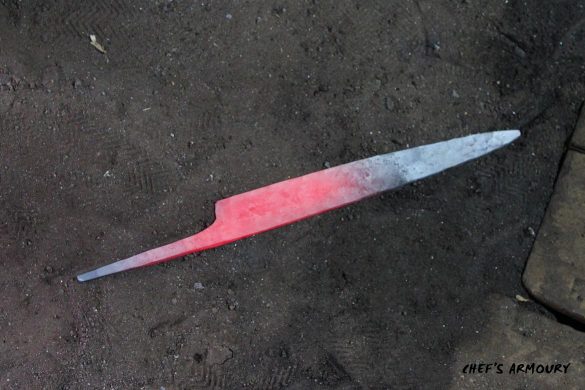
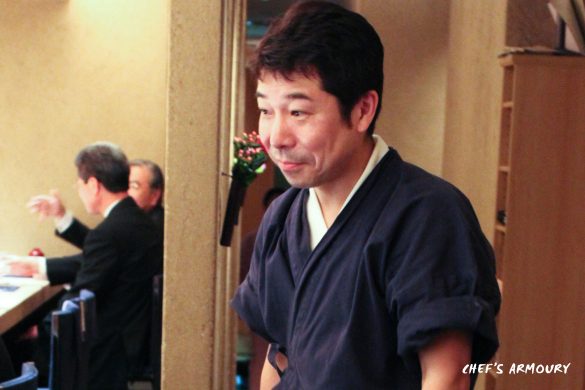
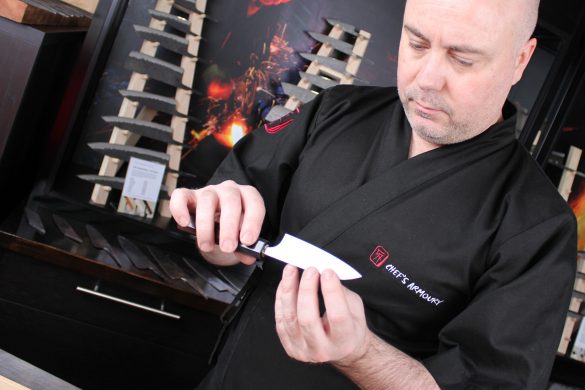
1 Comment
Very informative, thank you.
Enjoyed.